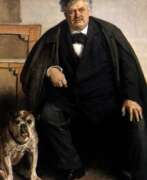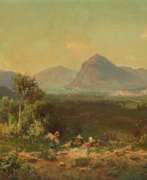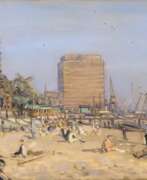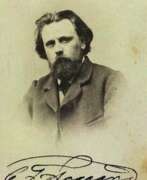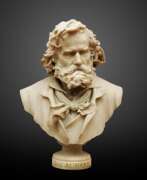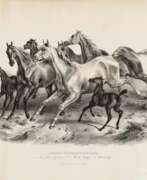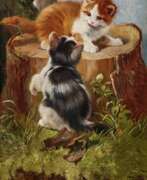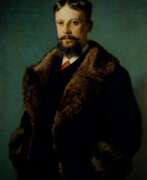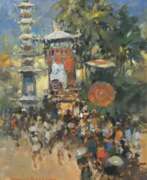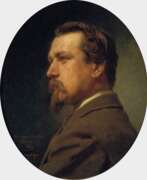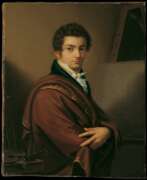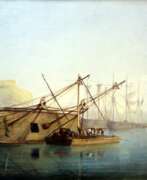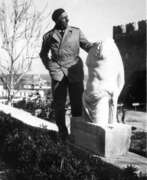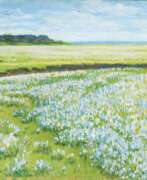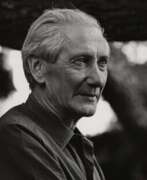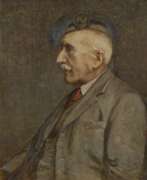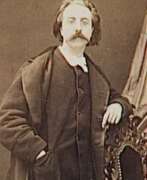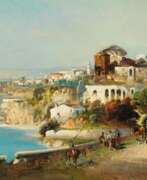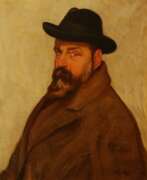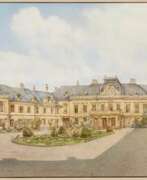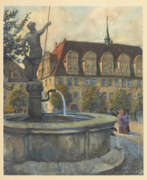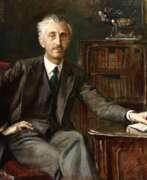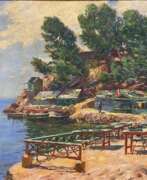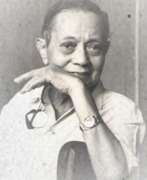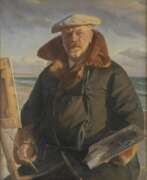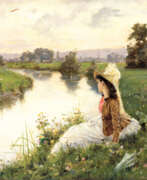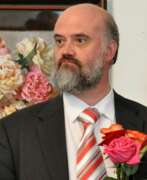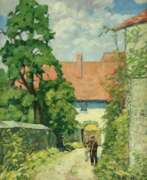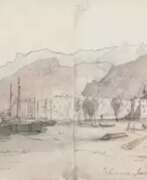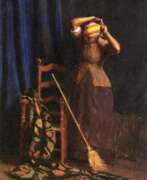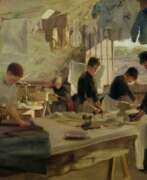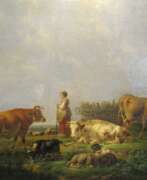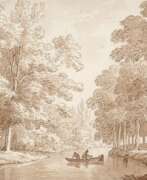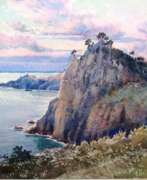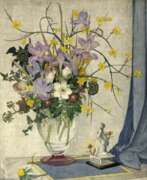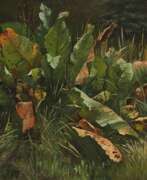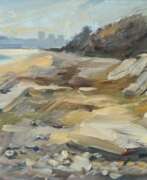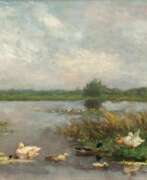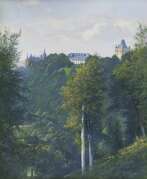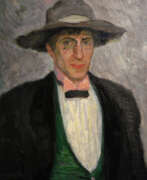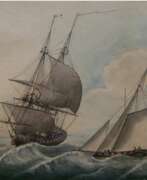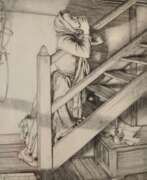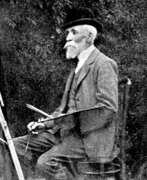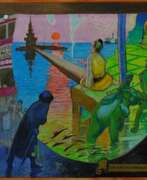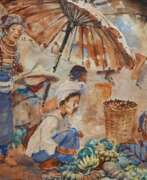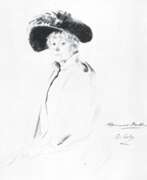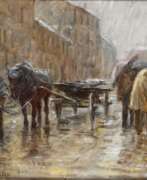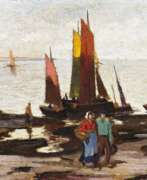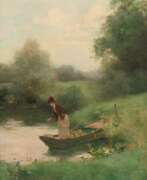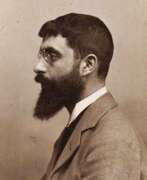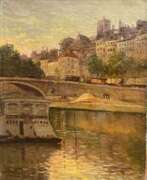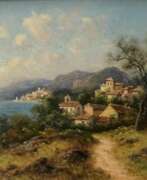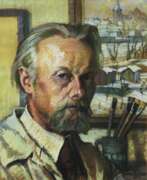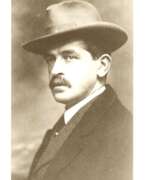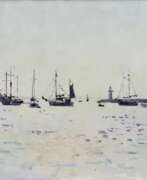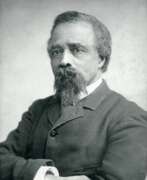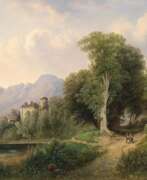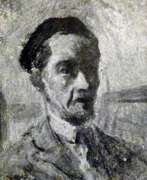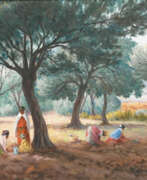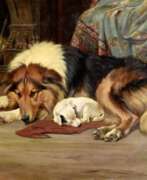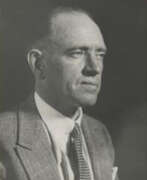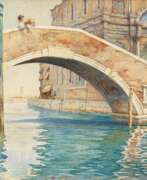Landscape painting Realism
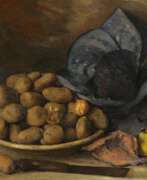

Wilhelm Schmurr was a German painter and co-founder of the Sonderbund in Düsseldorf. His style, characterized by clear expression, was influenced by the Pre-Raphaelites, Symbolists, and Realists. He received several awards and medals for his work and was a member of various art associations. Schmurr taught at the Kunstakademie Düsseldorf and inspired by the farmers after the war, he created scenes of simple life and still lifes. He was awarded the Karl-Ernst-Osthaus-Preis and the Bundesverdienstkreuz erster Klasse and became an honorary member of various artist associations.
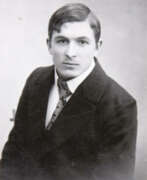

Wäinö Waldemar Aaltonen was a Finnish artist and sculptor, celebrated for his contributions to the cultural landscape of Finland, particularly during the early years of the nation's independence. Born in 1894, Aaltonen's works are distinguished by their nationalist themes and monumental scale, often reflecting the spirit and identity of Finland. His artistic journey was notably influenced by a trip to Italy in 1923, where he encountered cubist and futurist art, elements of which he integrated into his own work.
Aaltonen's sculptures are key features in Finland's public spaces, including the well-known statues in the House of Parliament and numerous works in Turku, such as the "Lily of Turku" and a statue of the runner Paavo Nurmi. His mastery is also showcased at the Wäinö Aaltonen Museum of Art in Turku, which houses a significant collection of his sculptures, paintings, and drawings. This museum not only celebrates his legacy but also serves as a central repository for his extensive works, donated by Aaltonen himself.
For those interested in exploring Aaltonen's work and the impact of Finnish sculpture, a visit to the Wäinö Aaltonen Museum of Art is invaluable. The museum provides a comprehensive view of his artistic evolution and contributions to Finnish art. For updates on exhibitions and events related to Wäinö Aaltonen, consider signing up for notifications through the museum's mailing list, ensuring you stay informed about new insights and offerings related to this pivotal artist.
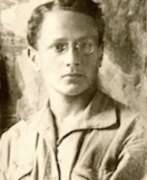

Pavel Efimovich Ab (Russian: Павел Ефимович Аб) was a Russian Soviet artist, born on November 22, 1902, in Orel. He is renowned for his contributions to painting and graphic arts, having studied under notable mentors such as Kuzma Petrov-Vodkin and A. I. Savinov at the VKhUTEIN in Leningrad during the years 1923 to 1929.
Ab's career was deeply influenced by his experiences during the Great Patriotic War, where he served in the 21st Rifle Division of the NKVD on the Leningrad Front. His war-time sketches of city defenders and subsequent military honors played a significant role in his artistic expression. After the war, he continued to actively participate in the creative community, producing notable works like "Pavlov in Koltushi" and "Speech of V. I. Lenin at the Admiralty Shipyards".
His artworks, which often depicted military and historical themes, are preserved in various museums and private collections in Russia and abroad. Ab's commitment to the Leningrad Union of Artists until his death in 1974 ensured that his legacy would influence future generations of artists.
For enthusiasts and collectors keen on exploring Russian Soviet art, staying updated on exhibitions and sales featuring Pavel Efimovich Ab's works can be enriching. Sign up here for updates related to new product sales and auction events concerning Ab's art.
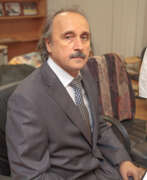

Sultan Shamsutdinovich Abaev (Russian: Султан Шамсутдинович Абаев), a Chechen and Russian artist born on November 1, 1954, in Khaidarkan, Soviet Union, is celebrated for his distinctive contributions to landscape art. A member of the Artists Unions of Saint Petersburg and the Chechen Republic, Abaev's work exemplifies his profound connection to his cultural roots and the rich landscapes that inspire him.
Educated at the prestigious Repin Institute of Painting, Sculpture, and Architecture in Saint Petersburg, Abaev has been honored multiple times for his artistic achievements, including receiving the title of Honored Artist of the Russian Federation. His works have been internationally recognized, finding places in private collections across countries such as Germany, the United States, and Japan.
Abaev's career also includes time spent abroad in Sri Lanka and South Korea from 1991 to 1993, where he expanded his artistic horizons and produced a series of paintings influenced by these experiences. Today, his works are sought after by collectors, especially those interested in landscapes and cultural narratives embedded in art.
Stay updated on exhibitions and sales related to Sultan Shamsutdinovich Abaev's enchanting landscapes by signing up for our exclusive alerts. These updates are essential for collectors and art connoisseurs interested in owning a piece of Chechen and Russian art history.
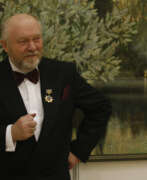

Mikhail Georgievich Abakumov (Russian: Михаил Георгиевич Абакумов) was a Russian artist, celebrated for his diverse artistic contributions and his deep connection to his homeland, Kolomna. Born in 1948, Abakumov became a prominent figure in the Russian art scene, recognized as a People's Artist of Russia and a dedicated teacher and community leader in Kolomna.
Abakumov's artistic oeuvre includes industrial and genre canvases, evocative landscapes, and intimate portraits, which are held in high esteem across Russia and in private collections worldwide. Notable works like "Metallurg" (1974) and "Spring Morning" (1996) showcase his ability to capture the essence of Russian life and landscapes. His art has been exhibited extensively within Russia and internationally, including over thirty solo exhibitions since 1979, contributing significantly to the cultural tapestry of the Soviet and post-Soviet periods.
His works are part of prestigious collections, including the State Tretyakov Gallery, and have been featured in various museums across cities like Moscow, St. Petersburg, and internationally.
For those interested in exploring Russian art and the legacy of Mikhail Georgievich Abakumov, signing up for updates on exhibitions and sales of his artworks can provide valuable insights and opportunities. Join our community to stay informed about events and auctions featuring Abakumov's remarkable works.
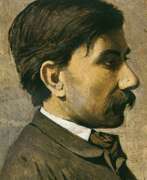

Giuseppe Abbati was an Italian artist, renowned for his role in the Macchiaioli movement. Born on January 13, 1836, in Naples, Abbati's early exposure to art came from his father Vincenzo, who specialized in painting architectural interiors. This foundational experience deeply influenced his initial works, which were primarily interiors. However, Abbati's artistic journey took a significant turn after losing his right eye in the Battle of Capua during Garibaldi's 1860 campaign. This event marked a period of transformation, leading him to Florence where he engaged deeply with the Macchiaioli group at Caffè Michelangiolo.
Abbati's contribution to the Macchiaioli movement was profound, characterized by a bold treatment of light and shadow, a technique he mastered by painting en plein air. His landscapes, such as the "View from the Wine Cellar of Diego Martelli" (1866), exemplify his skill in capturing the interplay of light, offering viewers a luminous landscape scene glimpsed through the doorway of a darkened interior. His works are celebrated for their unique perspective and are housed in prestigious collections, including several museums across Italy.
Tragically, Abbati's promising career was cut short at the age of 32, when he died in Florence from rabies, a consequence of a dog bite. Despite his brief life, his artistic legacy endures, influencing generations of painters who admire his innovative approach to natural light and landscape.
For enthusiasts and collectors keen on exploring Giuseppe Abbati's work further or acquiring pieces associated with him, subscribing to updates on new sales and auction events is highly recommended. Stay informed on opportunities to own a piece of this remarkable artist's legacy. Subscribe today for exclusive updates.
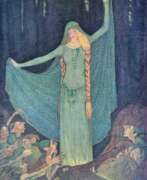

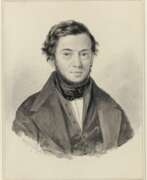

Jacobus Theodorus "Jacob" Abels was a Dutch painter. He was a pupil of the animal painter Jan van Ravenswaay. In 1826 Abels had visited Germany, and on his return settled at the Hague. He was especially noted for his paintings of moonlit landscapes. The Museum at Haarlem has works painted by him.
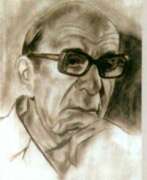

Memet Abselyamovich Abselyamov (Russian: Мемет Абселямович Абселямов) was a mid-20th century Soviet artist of Crimean Tatar origin. He is known as a landscape painter.
Memet Abselyamov became famous in 1935 with his genre painting "Kolkhoznitsy Udarnitsy", which was awarded the All-Russian prize and acquired by the Moscow Museum of Folk Art. During his life in Tajikistan, where he came after the deportation of the Crimean Tatars, the artist created mainly landscapes, including the paintings "Night in the Crimea", "Crimean Cypresses", "Gurzuf. Where A. Pushkin visited", "Sunny Day", "Spring in Tajikistan", "The Last Ray" and others.
He was a member of such creative associations as "Krymkhudozhnik", the Union of Artists of the USSR, the Union of Artists of the Tajik SSR.
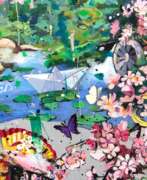

Angelo Accardi is a contemporary Italian artist. He grew up surrounded by both modern and traditional art. Although he studied fine art at the Art Academy of Naples, he never completed his training. Angelo Accardi illustrates surreal visions of everyday life under realistic backdrops of urban and natural landscapes. There is never a single meaning, but a whole story behind each painting. Ironic, striking, and playful, Accardi’s unique perspective and avant-garde style is a result of his diverse inspirations.
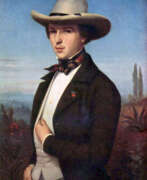

Oswald Achenbach was a German painter associated with the Düsseldorf school of painting. Though little known today, during his lifetime he was counted among the most important landscape painters of Europe. Through his teaching activities, he influenced the Kunstakademie Düsseldorf. His brother, Andreas Achenbach, who was twelve years older, was also among the most important German landscape painters of the 19th century. The two brothers were humorously called "the A and O of Landscapes" (a reference to their initials matching a common German reference to the Alpha and Omega).
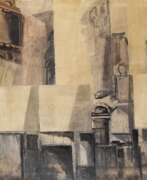

Peter Ackermann was a German painter and graphic artist. He became known for his alienation of architectural subjects. Ackermann was a representative of fantastic realism. The preferred subject of his work was classical Italian architecture, which he drew on site. He put together columns, portals and walls with machine parts, ruins and desolate parts of the city, which were piled up threateningly and thus alienated. In his etchings he showed references to the techniques of the old masters, his pictorial conception is compared with that of Giovanni Battista Piranesi and Canaletto.
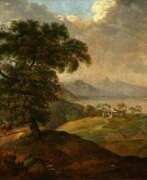

Johann Adam Ackermann was a German landscape painter of the early 19th century. His best-known works are his winter landscapes and watercolours. Johann Ackermann was the brother of Georg Friedrich Ackermann, who also painted landscapes but with less success.
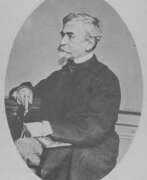

Benno Rafael Adam is a German animalist painter.
He began his fine art studies under the tutelage of his father, the balloonist painter Albrecht Adam. He masterfully depicted hunting dogs and horses, especially scenes of hunting wild animals. Benno Adam also illustrated several textbooks and manuals on livestock breeding.
Benno's son Emil Adam also became an artist.
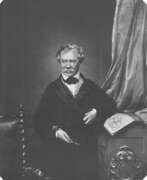

Albrecht Adam was a Bavarian painter of the first half of the 19th century. He is best known for the fact that as a member of Napoleon's Grand Army he took part in the campaign against Russia in 1812 as the official artist of the headquarters of the IV (Italian) Corps. Throughout the campaign, the artist made sketches and drawings, capturing many of the important events of the campaign. Later, many of these sketches became the basis for full-fledged paintings, and to subjects from the Napoleonic wars, which he witnessed, Adam addressed until the end of his very long life.
Albrecht Adam was also the author of memoirs, in which he described in detail the Battle of Borodino and a number of other key events of the War of 1812.
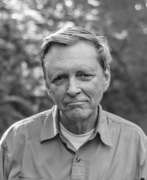

Robert Adams is an acclaimed American photographer known for his profound exploration of the American West's changing landscapes. His work, which gained prominence in the mid-1970s, delves into the tension between the natural beauty of the land and the marks of human encroachment. Adams's photography is a reflection on humanity's relationship with the environment, offering both a critique and a celebration of the landscape.
Robert Adams's notable series, such as "Turning Back" and "The New West," showcase his unique perspective on environmental and urban development issues. His work extends beyond just capturing images; it is a thoughtful commentary on the balance between nature and industrialization. His photographs, often devoid of people, focus on the land itself, telling a story of alteration and resilience.
Exhibitions of Adams's work, such as "American Silence: The Photographs of Robert Adams" at the National Gallery of Art, provide insight into his 50-year career and his ability to capture the silent yet profound narratives of the American landscape. His pieces are part of major collections and have been featured in numerous retrospectives, underlining his influence and significance in the world of photography.
For art collectors and enthusiasts, Robert Adams's work offers a poignant perspective on the American West, blending aesthetic beauty with critical environmental commentary. Engaging with his work invites reflection on our interaction with the landscape and our role in shaping the environment.
If you're interested in staying updated on Robert Adams's work and exhibitions, consider subscribing to newsletters from galleries and museums that feature his art. This way, you'll be informed about new displays of his work and opportunities to engage with his insightful perspectives on the American West.
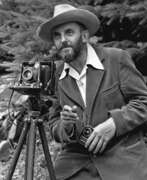

Ansel Easton Adams was an American photographer and environmentalist, celebrated for his black-and-white images of the American West, particularly Yosemite National Park. His profound connection with nature was not only the subject of his art but also the essence of his environmental advocacy, earning him a revered place in both the art and conservation worlds.
Ansel Adams' early exposure to the beauty of nature and a supportive family environment nurtured his dual interests in music and photography. His photographic journey began with a simple Kodak Box Brownie camera, which he used during his early visits to Yosemite, a place that would become the central theme of his life's work. Ansel Adams' dedication to photography and the environment was interwoven, as he utilized his art to advocate for the conservation of America's natural landscapes.
In the 1930s, Adams co-founded Group f/64, advocating for photographic purity and sharpness of focus, principles that would define his work. His role in establishing the photography department at the Museum of Modern Art in New York underscored his commitment to elevating photography as a respected art form. Ansel Adams' work has been exhibited in prestigious institutions such as the Smithsonian American Art Museum and MoMA, showcasing his contributions to American art and environmentalism.
For collectors and art experts, Ansel Adams' legacy transcends his iconic images; it lies in his ability to merge aesthetic excellence with a passionate message of environmental stewardship. His photographs not only capture the grandeur of landscapes but also serve as a timeless call to preserve the natural world.
To delve deeper into the world of Ansel Easton Adams and stay updated on new product sales and auction events related to his work, signing up for updates is a step toward embracing the heritage of a pivotal figure in art and environmental advocacy.
Join our community of art and antique enthusiasts to honor Adams' vision and ensure his message continues to inspire future generations.
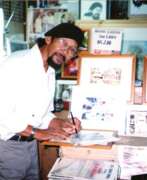

Abdul Ghani Ahmad is a contemporary Malaysian artist. He is known as a watercolorist working in the styles of realism and abstraction.
Abdul Ghani Ahmad creates landscape and rural landscapes as well as abstractions. His work is characterized by photographic precision and detail. Some of the artist's best known works include the Pristine Nature, Journey and Flora of Malaysia series. He has also produced a series of postcards with views of Malaysia.
Ahmad is a member of various art organizations including the Asian Watercolorists Confederation and the Malaysian Artists Union.


Ivan Konstantinovich Aivazovsky (Russian: Иван Константинович Айвазовский) was a Russian-Armenian painter, celebrated for his mastery in depicting seascapes. Born in 1817 in Feodosia, Crimea, Aivazovsky became one of the most renowned Russian artists of his time, with a career spanning over 60 years during which he created more than 6,000 paintings. His work is characterized by a profound understanding of the play of light on water, capturing the essence of the sea like no other artist of his era.
Aivazovsky's paintings stand out for their dramatic intensity and the emotional depth they evoke. He was particularly adept at illustrating the sea's many moods, from calm, serene waters to tumultuous storms. His ability to depict light, whether it be the tranquil glow of the moon on the water's surface or the fierce blaze of the sun setting over the ocean, was unparalleled. Among his most celebrated works are "The Ninth Wave" and "Among the Waves," both of which showcase his skill in portraying the sea's power and beauty. These masterpieces can be found in prestigious museums and galleries worldwide, including the State Russian Museum in Saint Petersburg and the Tretyakov Gallery in Moscow.
For collectors and experts in the realms of art and antiques, Aivazovsky's oeuvre represents a pinnacle of romantic landscape painting. His works are not only aesthetically magnificent but also embody a rich cultural and historical narrative, making them highly sought after in the art market. If you are passionate about the fusion of culture, art, and history embodied in painting, Ivan Konstantinovich Aivazovsky's works are a testament to the enduring allure of the sea and its many faces.
To stay informed about new product sales and auction events related to Ivan Konstantinovich Aivazovsky, we invite you to sign up for our updates. This subscription ensures you're always in the know about opportunities to add a piece of this legendary artist's legacy to your collection.
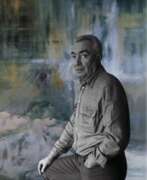

Giuseppe Ajmone was an Italian painter and printmaker.
He studied painting at the Brera Academy of Fine Arts in Milan and in 1946 was one of the signatories of the Realist Manifesto, also known as "Oltre Guernica.
Ajmone painted both landscapes and still lifes as well as semi-abstract figures.
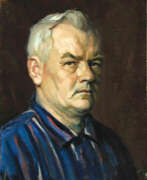

Ivan Osipovich Akhremchik (Russian: Ива́н О́сипович Ахре́мчик) was a twentieth-century Belarusian Soviet artist. He is known as a painter and teacher.
Ivan Akhremchik worked in the genres of portrait, thematic painting, landscape and monumental art. He was one of the first Belarusian artists turned in his work to the theme of the establishment of Soviet power and socialist construction in Belarus. As a muralist, the artist participated in the creation of several pictorial panels for exhibitions and cultural institutions of Belarus.
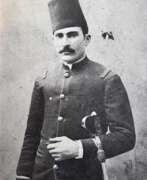

Abdul Qadir Al Rassam was an Iraqi painter of the first half of the twentieth century. He is known as a painter and graphic artist and is considered the founder of modern Iraqi painting.
Al Rassam, a military officer by training, studied drawing at the Military College in Istanbul. Returning to Iraq, he created landscapes, portraits and murals. His work is characterized by historical and ethnographic accuracy. The master, according to critics, contributed to the influence of the European academic school on the Iraqi art scene.
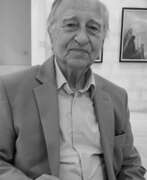

Saad Al-Tai is a contemporary Iraqi artist. He participated in several exhibitions in Baghdad and abroad. Al-Tai was a member of the Iraqi Impressionists Group. Despite the name of the group, Al-Tai was not categorically an impressionist, rather his style lent more towards cubist realism. For him, the colour of the painting was determined by its subject matter. Al-Tai is an award winning artist who, amongst other things, received Italian knighthood in 2005 in recognition for his efforts in fostering Iraqi-Italian cultural dialogue including founding and heading the Italian Language Department in 2002 at the College of Languages, Baghdad University.
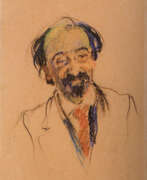

Manuel Khristoforovich Alajalov (Russian: Мануил Христофорович Аладжалов) was a prominent Russian and Soviet landscape painter and educator, born in 1862 in Nakhichevan-on-Don. Alajalov's work is distinguished by his exquisite landscapes that capture the essence of the Russian countryside. His paintings are noted for their masterful use of light and shadow, bringing a serene and lifelike quality to his depictions of nature.
Alajalov's career was marked by a deep commitment to portraying the natural world with authenticity and emotion. His art reflects a profound appreciation for the tranquility and beauty of rural Russia, making him a significant figure in the history of Russian art. Alajalov's legacy as a teacher also influenced many aspiring artists of his time, further cementing his place in the artistic community.
Alajalov's works are showcased in several major Russian museums, including the State Tretyakov Gallery, where art enthusiasts can experience his contribution to landscape painting. His paintings continue to be celebrated for their technical excellence and emotional depth, attracting collectors and admirers from around the world.
For updates on new product sales and auction events related to Manuel Khristoforovich Alajalov, sign up for our newsletter. Stay informed about exclusive opportunities to own a piece of this celebrated artist's legacy.
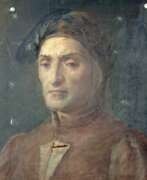

William Herbert Allen was an English landscape watercolour artist whose career spanned more than 50 years from the 1880s to the 1940s. He was invariably referred to as «W. H.» rather than by his given name. He produced several thousand watercolours, chalk and pencil sketches mainly of the landscapes, traditions and people of West Surrey and North-east Hampshire. In addition, he produced scenes of other parts of the British Isles and various parts of continental Europe. These works included commissions in Italy for the Victoria and Albert Museum, Dublin, Edinburgh and Preston museums. He was made a member of the Royal Watercolour Society in 1903 and the Royal Society of British Artists in 1904 and his work was exhibited at the Royal Academy in 1927.


Darren James Almond is an English artist, based in London. He was nominated for the 2005 Turner Prize. He works in a variety of media including photography and film, which he uses to explore the effects of time on the individual.[3] He uses "sculpture, film and photography to produce work that harnesses the symbolic and emotional potential of objects, places and situations, producing works which have universal as well as personal resonances"
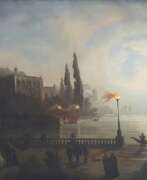

Gustav Adolf Amberger was a German painter and graphic artist. He lived in Rome for two years and learned the painting trade from Peter von Cornelius. One of his first works was the painting The Oceanides. Amberger worked as a designer in the ribbon factory founded by Philipp Trüdinger. Around 1870 he was the court painter to the Landgrave of Hesse. In Antwerp he was a pupil of Joseph van Lerius and made numerous copies, of which Les deux voies is the best known.
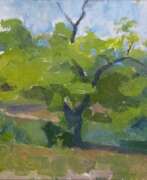

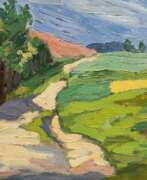

Louise Elisabeth Andrae was a German Post-Impressionist landscape painter and watercolorist. She studied with two landscape painters; Gustav Adolf Thamm in Dresden and Hans von Volkmann in Karlsruhe. She settled in Dresden, but spent long periods on the island of Hiddensee. There, she helped organize a group known as the Hiddensoer Künstlerinnenbund, an association of women artists that included Clara Arnheim, Elisabeth Büchsel, Käthe Loewenthal and Katharina Bamberg. They were regular exhibitors at an art venue known as the Blaue Scheune (Blue Barn), established in 1920 by Henni Lehmann. She also exhibited frequently with a group known as the Kunstkaten in Ahrenshoop.Wikipedia
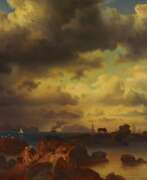

Emilia Appelgren was a Finnish artist, one of the first female landscape painters of 19th century Finland.
Emilia Appelgren was also a good copyist and illustrator. After the establishment of the Finnish Society of Artists in 1846, she studied at art schools at home and abroad.
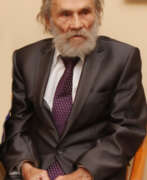

Boris Vladimirovich Arakcheyev (Russian: Борис Владимирович Аракчеев) was a Soviet and Belarusian artist of the second half of the twentieth and early twenty-first centuries. He is known as a painter and teacher.
Boris Arakcheyev worked in easel painting in the genres of landscape, still life, thematic paintings and battle scenes. A series of portraits of contemporaries and famous people occupies a special place in his creative heritage. He also worked in monumental painting - he was one of the creators of the diorama "Minsk Cauldron" in the Museum of the History of the Great Patriotic War of Belarus.
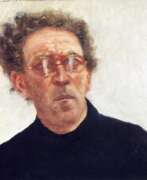

Avigdor Arikha (Hebrew: אביגדור אריכא) was a Romanian-born French–Israeli artist, printmaker and art historian.
Arikha painted directly from the subject in natural light only, using no preliminary drawing, finishing a painting, pastel, print, ink, or drawing in one session. His profound knowledge of art techniques and masterly draughtsmanship enabled him to abide by this principle of immediacy, partly inspired by Chinese brush painting.
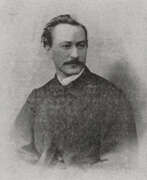

Albert Arnz was a German landscape painter of the Düsseldorf school. He studied painting from 1854 to 1860 at the Dusseldorf Academy of Art, where his two teachers were Andreas and Oswald Achenbach. Arntz painted atmospheric landscapes in Germany, Italy and Switzerland.
Albert Arntz was a member of the Malkasten Art Society and participated in their "living paintings" from 1875 onwards.
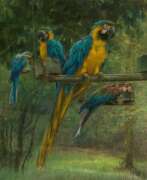

Berthe Constance Ursule Art was a Belgian still life painter. She was trained by Alfred Stevens and advised by Franz Binjé. Berthe Art exhibited her work at the Palace of Fine Arts and The Woman's Building at the 1893 World's Columbian Exposition in Chicago, Illinois. She became a member of the Brussels-based club called Cercle des Femmes Peintres which was active 1888–1893. They were the Belgian equivalent of the French Union des Femmes Peintres et Sculpteurs. She began a Brussels gallery in 1911 together with some friends from the (by then defunct) Circle of Women Painters. The gallery was called the Galerie Lyceum.
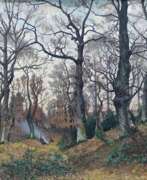

Alphonse Asselbergs was a Belgian painter, primarily of landscapes and forest scenes. Much of his training in art came from Huberti, and he would travel with him in the area around Namur. It was there he befriended Théodore T'Scharner, a student of Ferdinand Marinus, with whom he would go on painting expeditions in the Ardennes. In the summer of 1866, he took an extended trip with Huberti, to the artists' colony at Anseremme, where he was first exposed to the concept of painting en plein aire. In 1867 year he joined the painters at the artists' colony in Tervuren, where he stayed regularly until 1871. The Tervuren Schhol later became known as the Belgian equivalent of the Barbizon School. By 1868, he was receiving good reviews at the salon in Ghent. That same year, he became one of the co-founders of the Société Libre des Beaux-Arts. By 1869, he was exhibiting in Brussels. From 1873 to 1874, he visited Algeria with the watercolorist, Arthur Bouvier. This resulted in a number of Orientalist canvases.
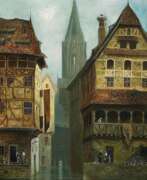

Robert Assmus is a German landscape artist and illustrator. He took lessons from the floral artist Friedrich Wilhelm Völker. He devoted himself entirely to landscape painting, earning a living by illustrating for the newspapers Illustrirte Zeitung, Die Gartenlaube, Daheim magazine and other publications. After the end of the Franco-Prussian War of 1870-1871, he undertook study trips to northern Italy, the Carpathians, Hungary, the Baltic Sea and Switzerland. Inspired by what he saw, he published a magnificent illustrated work, the album “Alsace-Lorraine,” which received positive reviews from the public.
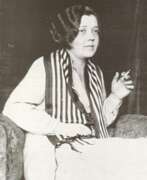

Zinaida Antonovna Astapovich-Bocharova (Russian: Зинаида Антоновна Астапович-Бочарова) was a Russian, Soviet and Belarusian artist of the twentieth century. She is known as a painter, graphic artist and teacher.
Zinaida Astapovich-Bocharova worked in the genres of portrait, landscape, propaganda poster, as well as book illustration - mainly for fairy tale books. She painted in watercolor, oil, pencil, charcoal, gouache, and pastel. Much of her work from the 1930s and 1940s was lost during the evacuation of the artist from besieged Leningrad.
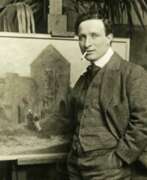

Charles Garabed Atamian is a French artist of Armenian origin born in Turkey.
He studied for a time at the Academy of Fine Arts in Venice, then worked as chief designer at a porcelain factory in Istanbul. In 1894, Atamian worked with a team of artists to decorate the new palace of Sultan Abdul-Hamid Il in Yildiz, on the European side of the Bosphorus. He designed, among other things, the patterns for the ceramic tiles of the palace walls.
In 1897, Atamian emigrated to France and began illustrating books and magazines, as well as working on sets for several Parisian theaters. Since 1903 Atamian participated in various exhibitions with unquestionable success. He painted landscapes, sea and beach scenes with children (including some 200 paintings at Saint-Gilles in the Vendée, where he resided each year during the summer months from 1923 to 1939). Throughout his career he was a fine portrait painter. He became a member of the National Society of Artists in 1927.
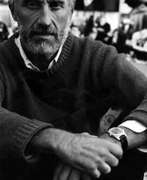

Ugo Attardi was an Italian painter, sculptor and writer. Attardi moved from Genoa to Rome in the early 1950s, where he formed the group Forma 1 together with other artists. His sculpture of Ulysses is now permanently installed in Battery Park in New York
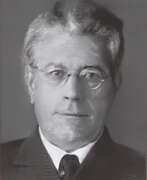

Vsevolod Grigorievich Averin (Russian: Всеволод Григорьевич Аверин) was a Ukrainian Soviet graphic artist and book illustrator. He was one of the most important Ukrainian animal painters of the first half of the 20th century, incorporating avant-garde techniques into his work.
Averin worked in book and easel graphics, especially lithography, as well as portrait and landscape painting. He illustrated many well-known works, including the Atlas of Human Anatomy and a novel by M. Twain. His work was characterised by an exquisite style and harmonious design, and his estate includes some 300 bindings, 3,000 illustrations and 90 posters.
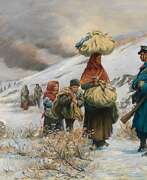

Rodolphe Auguste Bachelin was a Swiss landscape, history and portrait painter as well as a writer, historian and art critic.
He was interested in the Lombardy War of 1859 and in particular in the Franco-Prussian War of 1870 to 1871, which provided him with several subjects with its troop surge at Les Verrières. The Neuchâtel painter was greatly influenced by the writings of Rodolphe Töpffer and aspired to become a Swiss national painter.
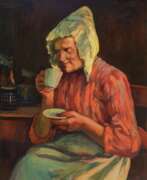

Gottfried Albert Maria Bachem was a German painter and illustrator of the Düsseldorf School. Bachem, who belonged to the Malkasten artists' association from 1921 to 1932, painted portraits, genre scenes and landscapes, and he also illustrated children's books. From 1900 he took part in numerous art exhibitions, including in Berlin.
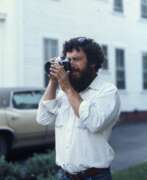

John Baeder is an American painter closely associated with the photorealist movement. He is best known for his detailed paintings of American roadside diners and eateries. His interest in small towns across America began when he was young by photographing old cars and other relics. He started working as an art director in Atlanta for a branch of a New York advertising agency in 1960, and subsequently moved to New York City in 1964. He went on to have a successful career in advertising through the early 1970s, while continuing to paint, draw and photograph on his own time. Baeder left the advertising field in 1972 to pursue his artistic career full-time. The same year, OK Harris Gallery in New York began exhibiting his artworks. Since then, he has had more than thirty solo exhibitions at art galleries. His work includes oil paintings, watercolors and photographs. Baeder’s work aims to chronicle the disappearing aspects of American culture. Baeder is the recipient of the Tennessee Governor's Distinguished Artist Award in 2009.
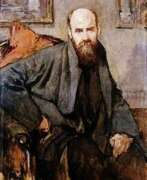

Albert Baertsoen was a Belgian painter, pastellist and graphic artist. His debut as a painter came in 1887, when he participated in an exhibition in Brussels held by the secessionist group l'Essor. He continued his studies in Paris, at the art school of Alfred Philippe Roll, and exhibited at the Salon in 1889. In 1894, he helped found the "Cercle des Beaux-Arts d'Ostende". From 1896 to 1901, he continued to exhibit throughout Europe, winning several Gold Medals. In 1913, he served as a member of the art jury for the Ghent World's Fair. During World War I, he lived in London, returning to Ghent in 1919. That same year, he was appointed a member of the Royal Academy of Belgium.
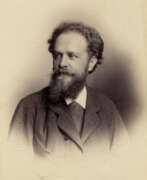

Hermann Baisch was a German painter of the second half of the 19th century. He is known as a landscape painter.
Baisch found inspiration for his landscapes in the neighborhoods around Munich. He often depicted livestock in his paintings, which created a cozy and warm atmosphere. The artist preferred to work en plein air, and his works showed the influence of French Impressionism. His most successful works, in particular, are considered to be "Cows in the pasture", "Morning", "Near Dortrecht at low tide", "On the Dutch Canal".
Baisch was a member of the academies of fine arts in Berlin, Munich and Vienna, as well as a professor at the Art School in Karlsruhe.


Leonid Fyodorovich Balaklav (Russian: Леонид Фёдорович Балаклав) is a Soviet and contemporary Israeli artist. He is known as a painter, graphic artist and cartoonist.
Leonid Balaklav began his career in Kishinev, then moved to Kiev, where he worked on scientific films. In 1987 at the Tokyo Film Festival he was awarded a gold medal for his animated works. In 1989 he moved to Israel, where he became known for his portraits, lyrical landscapes and works on religious themes. His work is often associated with Jewish identity, and his paintings are known for their intimacy and detail. He uses oil paints on wood to create his works.
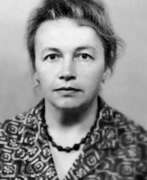

Irina Mikhailovna Baldina (Russian: Ирина Михайловна Балдина) was a Soviet and Russian artist of the second half of the twentieth and early twenty-first centuries. She is known as a painter, a representative of the Leningrad school.
Irina Baldina participated in exhibitions in Leningrad since 1952. Her work covered a variety of genres, including portraits, landscapes, still lifes and genre compositions. From 1960 to 1980, her works were characterized by themes of modernity, nature and people of Zaonezhye. Her style was characterized by broad brushstrokes, decorative and mastery in conveying the colors of northern nature.
Her works are in museums and private collections all over the world, including Russia, France, USA, Japan and other countries.
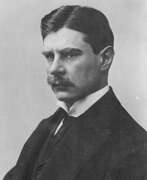

Hans Baluschek, full name Alphons Anton Alexander Hans Ernst Karl Maria Baluschek, was a German painter, graphic artist and writer, representative of the New Materiality style.
Baluschek studied at the Royal Academy of Arts, and in 1900 became a member of the Berlin Secession, a group of artists that also included Ernst Barlach, Max Beckmann, and Wassily Kandinsky. Baluschek was always socially critical, which was reflected in the subjects of his paintings. Many of his paintings are dedicated to the working class of Berlin, he addressed the gray everyday life of Berlin: gray air, gray walls, gray people. Baluschek is often categorized as a German Expressionist because of his emotional style, but his style has something of New Objectivity, Impressionism, and naive painting. He also drew illustrations for the popular children's book Little Peter's Trip to the Moon, and collaborated with periodicals as an illustrator.
World War I instilled patriotic feelings in Baluschek, and he painted a number of subjects on this theme. After the war, he joined the Social Democratic Party and became involved in labor movements. In 1926 he helped establish an artists' relief fund and later became director of the annual Berlin Exhibition. The German Nazis, who came to power in 1933, declared Baluschek a Marxist and a "degenerate artist," suspended him from all positions, and banned him from exhibiting.


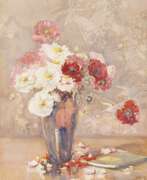

Gwen Barringer was a South Australian artist, known for her watercolours. Barringer was noted for watercolours of flowers and landscapes, to which she invested a fairyland-like glamour and remained immune to trends and changing fashions. She is represented in the State galleries of South Australia and Victoria, and the National Gallery, Canberra. Barringer studied at the South Australian School of Arts and Crafts under H. P. Gill, Archibald Collins and Hans Heysen. She was a council member of the South Australian Society of Arts for over 30 years, and was also well known as a teacher.
